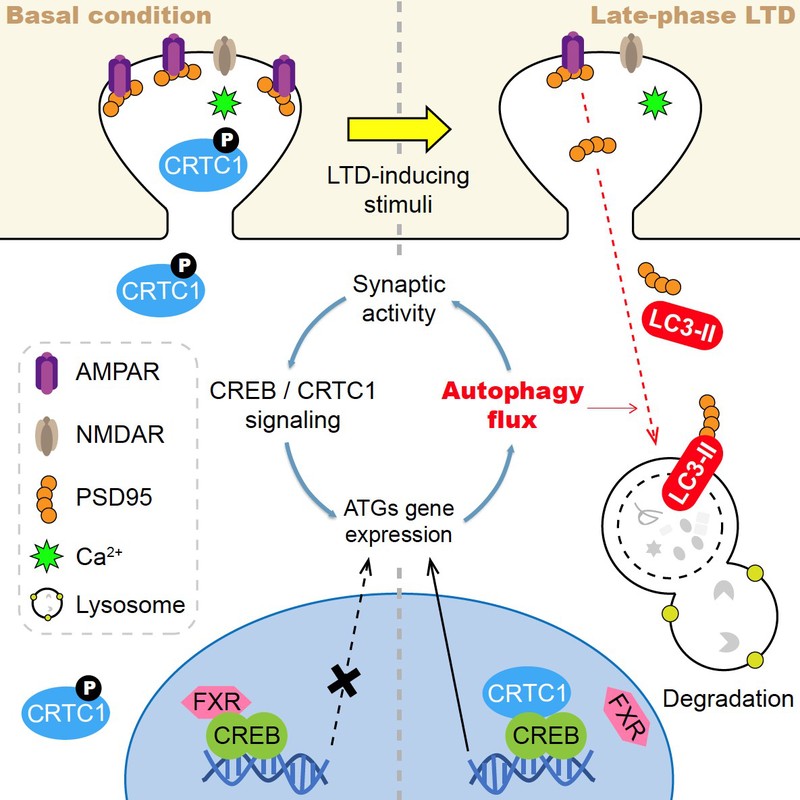Huan Ma's group published in Cell Reports
The research team led by Prof. Huan Ma has recently published an article titled Neuronal activity recruits the CRTC1/CREB axis to drive transcription-dependent autophagy for maintaining late-phase LTD on Cell Reports online on July 20, 2021 at 11am, ET.
Cellular resources must be reorganized for long-term synaptic plasticity during brain information processing, in which coordinated gene transcription and protein turnover are required. However, the mechanism underlying this process remains elusive. Here, we report that activating NMDARs induces transcription-dependent autophagy for synaptic turnover and late-phase long-term synaptic depression (L-LTD), which surprisingly invokes cytoplasm-to-nucleus signaling mechanisms known to be required for late-phase long-term synaptic potentiation (L-LTP). Mechanistically, LTD-inducing stimuli specifically dephosphorylate CRTC1 at Ser-151 and are advantaged in recruiting CRTC1 from cytoplasm to the nucleus, where it competes with FXR for binding to CREB and drives autophagy gene expression. Disrupting synergistic actions of CREB and CRTC1 (two essential L-LTP transcription factors) impairs transcription-dependent autophagy induction and prevents NMDAR-dependent L-LTD, which can be rescued by constitutively inducing mTOR-dependent autophagy. Together, these findings uncover mechanistic commonalities between L-LTP and L-LTD, suggesting that synaptic activity can tune excitation-transcription coupling for distinct long-lasting synaptic remodeling.
Yue Pan, Xingzhi He, Cuicui Li, and Yanjun Li are co-first authors of this article. Prof. Huan Ma from Zhejiang University School of Medicine is the corresponding author. This study is mainly supported bythe National Key R&D Program of China and the National Natural Science Foundation of China.








